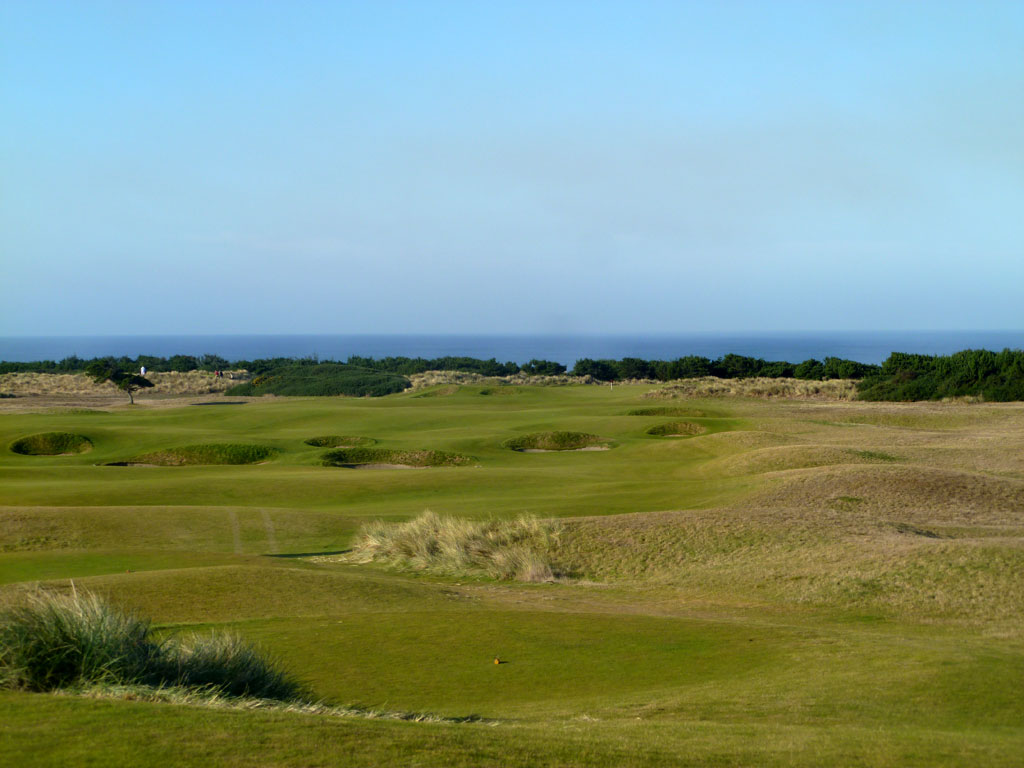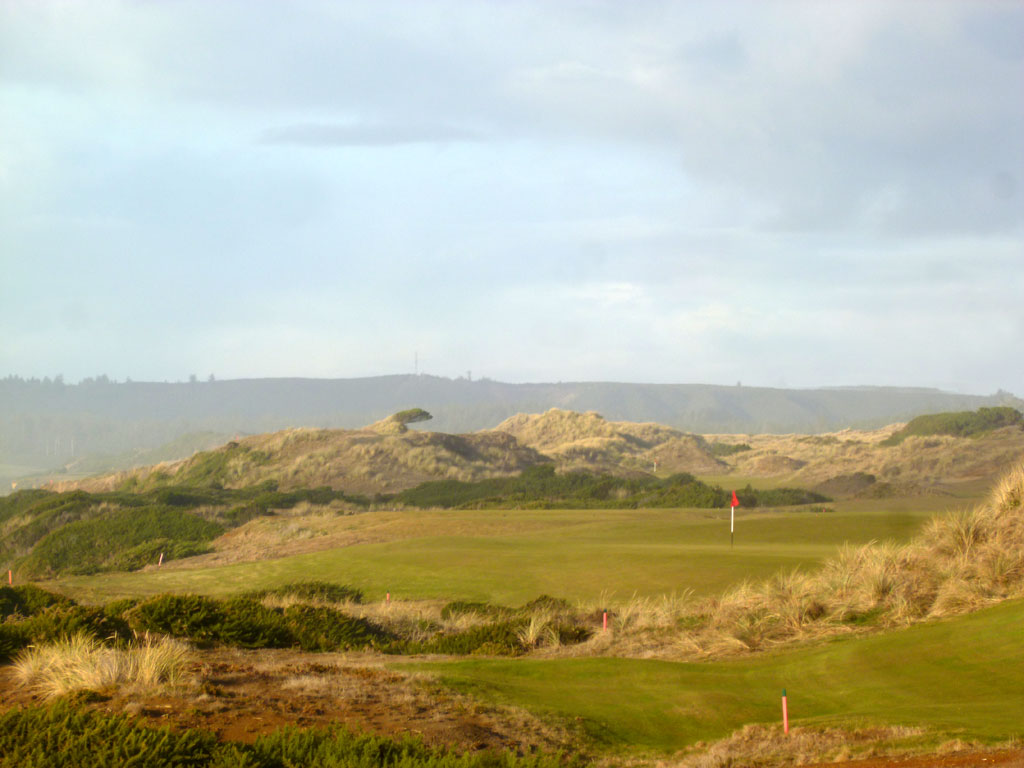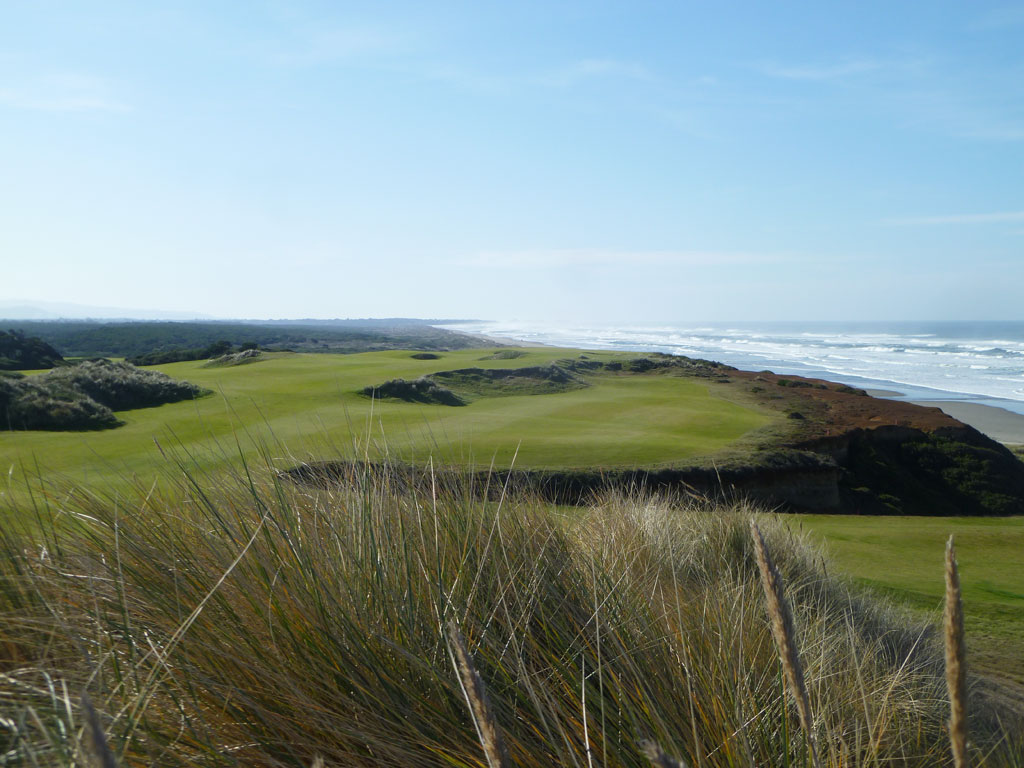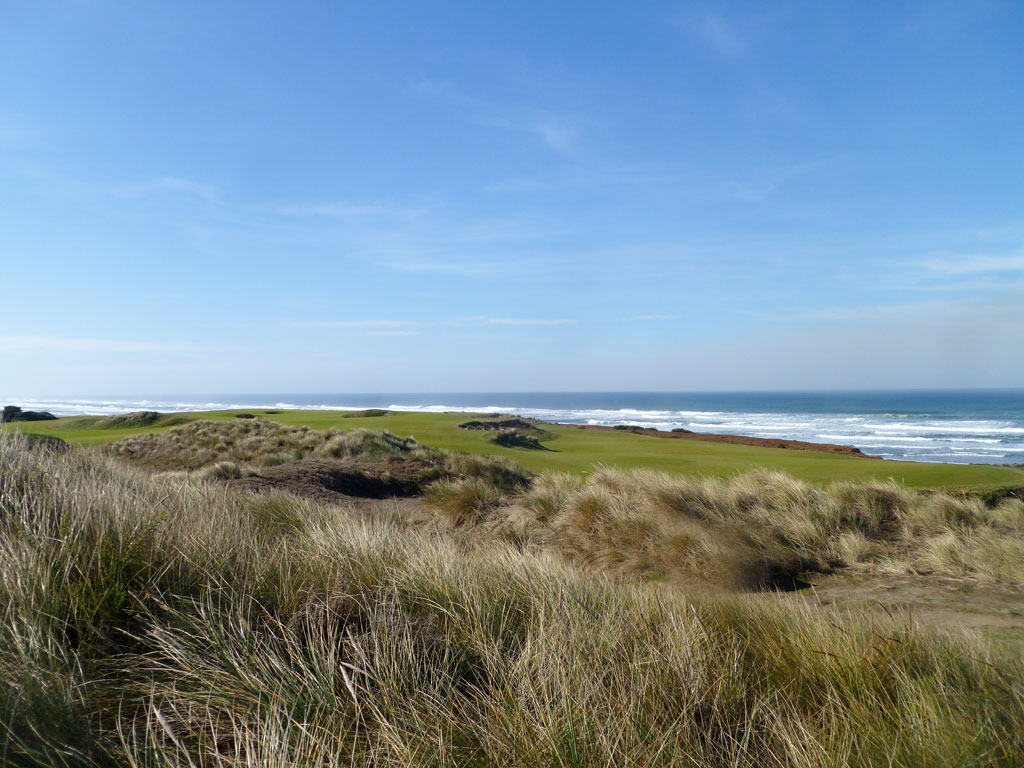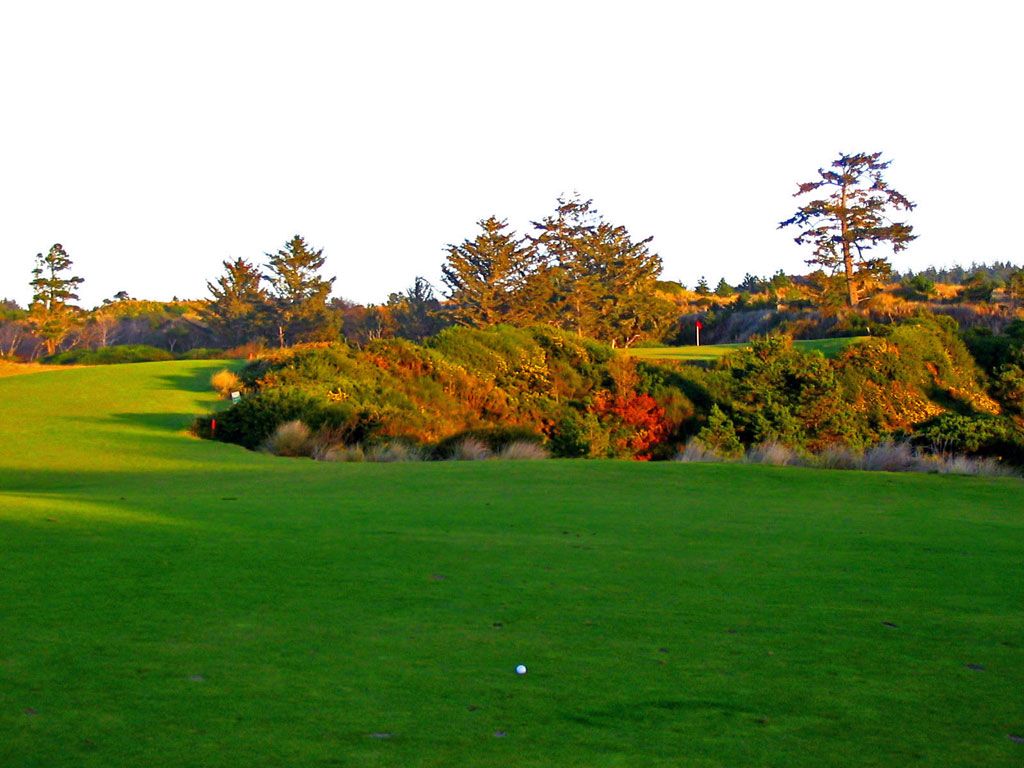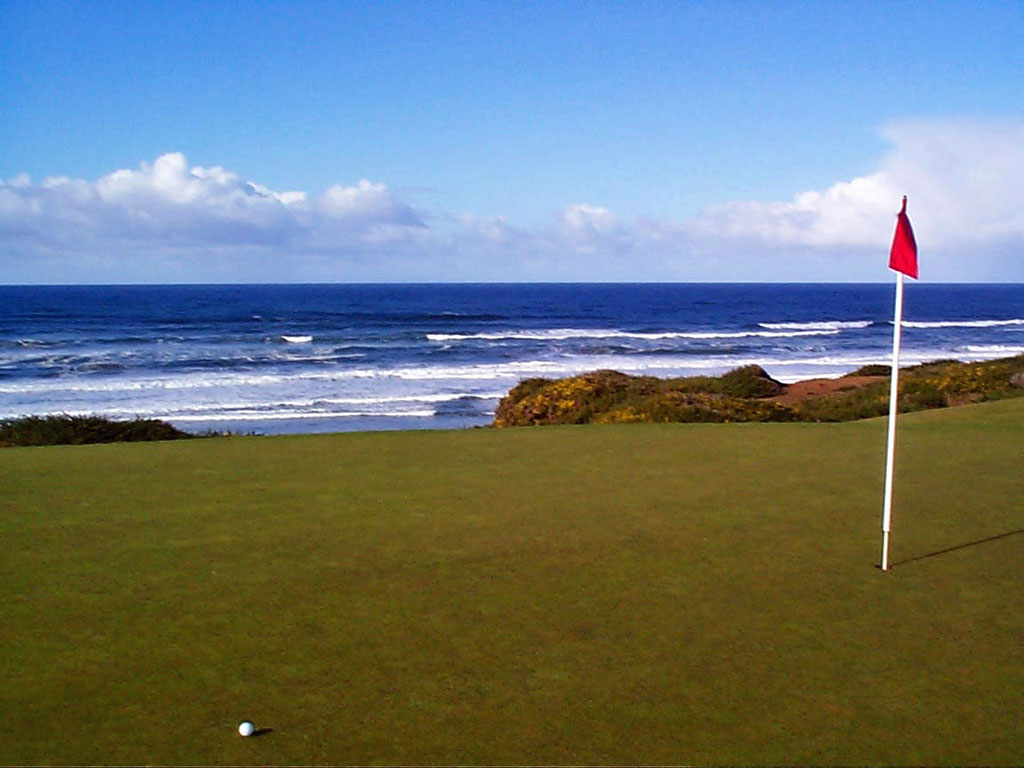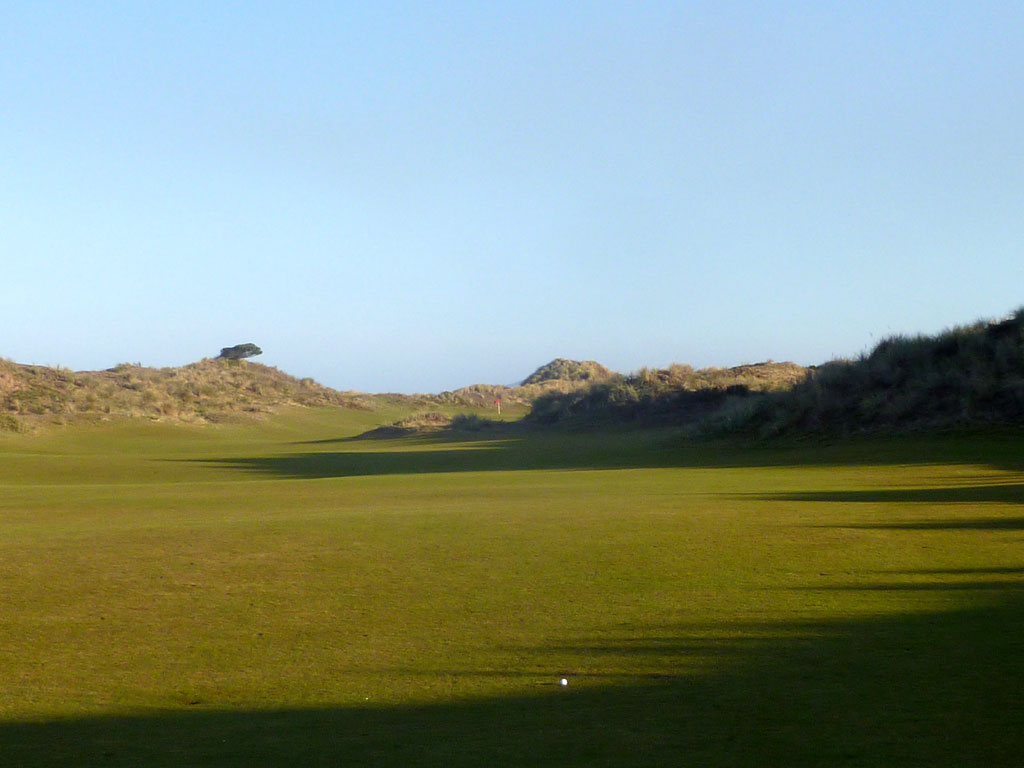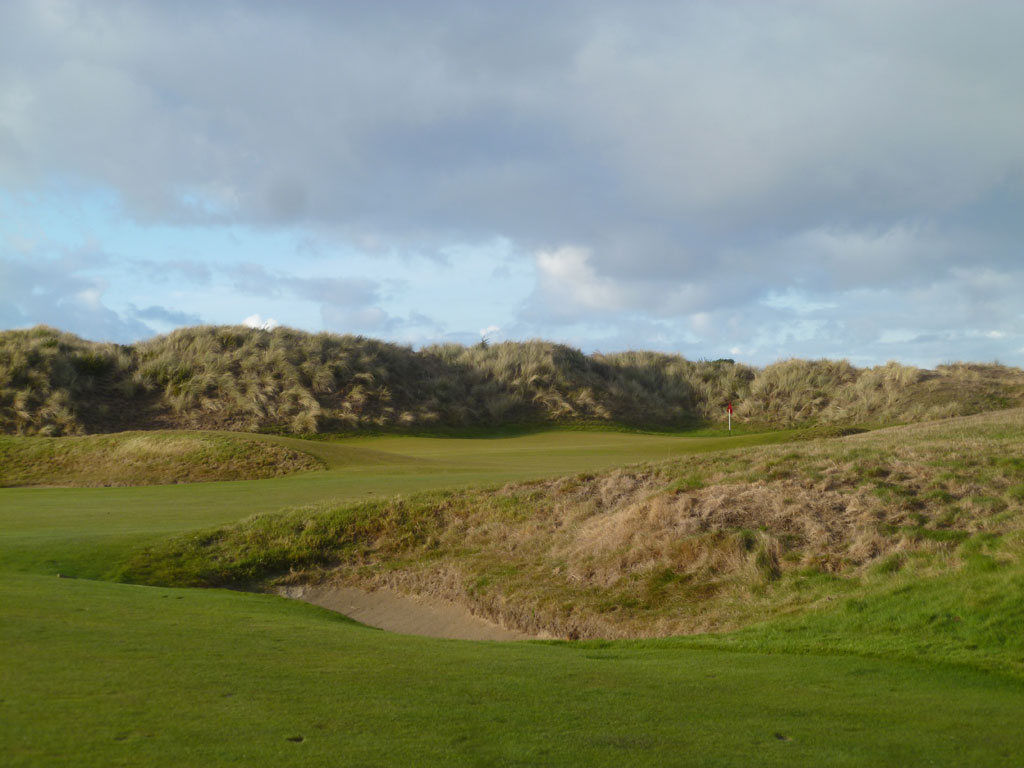Bandon Dunes
Article by: Billy SatterfieldI have to admit, every time I think about going back to Bandon I get a little bit gitty. While at times I fear you can overhype a golf course before going to play it, I'm 100% comfortable in saying that the courses at Bandon Dunes simply represent some of the best golf in the country and there is no other destination like it. No bowled fairways like Coeur d'Alene, no cart paths and commercial feel like Pebble Beach, and no $450/round price tag like TPC Sawgrass. It is simply the purest golf experience in America . . . and anyone can play there.
Today's edition of "Get pumped like crazy for Bandon" will focus on the original, Bandon Dunes. The course was a raw piece of land in 1994 when founder Mike Keiser brought a little known architect named David McLay Kidd to the site and asked him to bring a piece of his native land Scotland here to America. Kidd was just 26 years old when he first met Keiser as the two attempted to traverse the property where much of the future course remained a mystery since what would become the back nine was heavily forested and the eventual front nine was buried under 6-12 feet of gorse. It wasn't until the property was cleared and work on the design commenced that everyone involved began to realize just how special of a golf course this could become. And so it was in 1999, the course opened and the world was awed by a spectacular course being unearthed by an unknown architect in an extremely remote destination.
Prior to doing any work on the property, Kidd was dead set on the course being walking-only, no homes on the property, no signs on tee boxes, and that the course should play a bump-and-run style without overly maintained conditions. It was music to Keiser's ears who had the same aspirations for the course with hopes of it being like his favorite course in the world, National Golf Links of America, but with more of a true links feel that hadn't been experienced in the states. Originally players were required to take caddies for their round and no yardages were posted on sprinkler heads, but that has since changed to accommodate the general public that isn't quite as passionate about the original roots of the game.
One thing you'll notice right off the bat with Bandon Dunes is that the fairways are wide and the greens are large to accommodate reasonable playing conditions when facing the winds that always accompany links golf. In fact, Bandon Dunes was the most forgiving course on the property off the tee box until Old Macdonald came along, but it is far from a walk in the park. Your short game will have to be spot on while navigating undulated greens, chipping from tight lies, and trying to avoid the gorse that eats golf balls alive. The bunkering was inspired by the famed King's course at Gleneagles where Kidd's father was the superintendent for 25 years and David spent a lot of time at. Those that have visited the other side of the pond will attest that Bandon Dunes feels like Scotland and Pacific Dunes feels more like Ireland with more pronounced dunes and raised greens.
In Europe, match play is a much more common way to play the game compared to America where stroke play is clearly king. As a Scot, Kidd wasn't concerned about how players would score on the course as a whole; he wanted each individual hole to be its own factor in a match. As such, David has said that holes 15-17 are more do-or-die holes where he wants to see just as many birdies as he does double bogies as players duke it out down the stretch of a quality match play competition. #15 is a beautiful par-3 that plays back into the wind to a raised green with the ocean acting as a stunning back drop. #16 is the signature hole on the property and a fan favorite of most patrons. This mid-length par four plays along the coast and over two ravines where long hitters have the chance to knock a ball up near the green when the wind is assisting them. #17 is Mike Keiser's favorite hole and one of the longer par 4s on the property. It features a deep crevasse along the right side which separates Bandon Dunes from the property occupied by Bandon Trials and the Preserve. The narrow but deep green sits right next to the crevasse and dares players to take dead aim at challenging pin locations.
Other holes of note are #4 which was recognized by Golf magazine in 2000 as one of the Top 500 golf holes in the world. This dogleg right waits until the approach shot to give players a clear view of the ocean and offers one of the most spectacular iron shots you'll ever take. #5 plays along the ocean in the opposite direction of #16 and is often regarded as the best hole at Bandon. Three of the four par 3s on the course play on the ocean and offer simply inspiring views while playing them. In fact, you can check them out on the World Golf Tour app or website (wgt.com) where some of the best par 3s at the resort are featured. Interestingly, Kidd's favorite hole from a design aspect is #14, a non-ocean hole that plays to an intriguing green complex set at the base of a crescent dune.
Everyone has an opinion of which course is best at Bandon, and many will argue that you can't beat the original. With the most ocean views, generous playing widths, and the most scenic collection of par 3s at the resort, Bandon Dunes could very well end up being your favorite course too.

